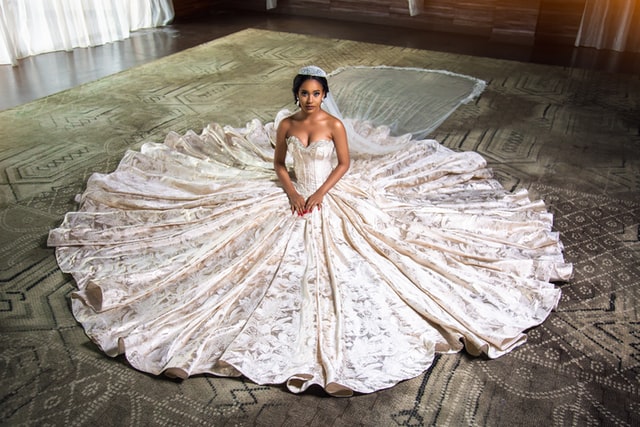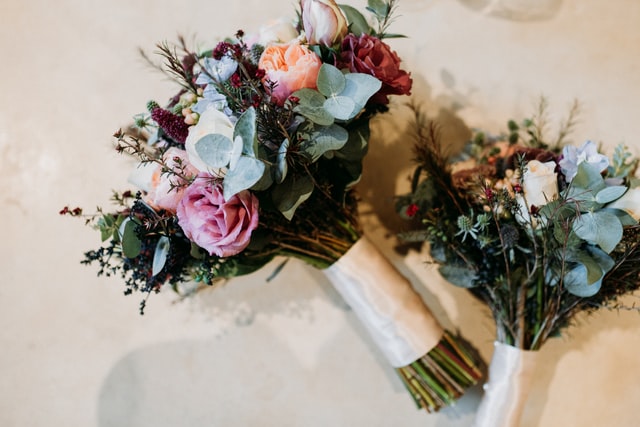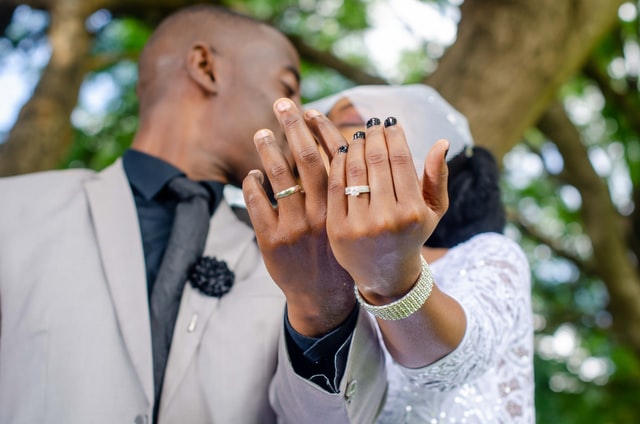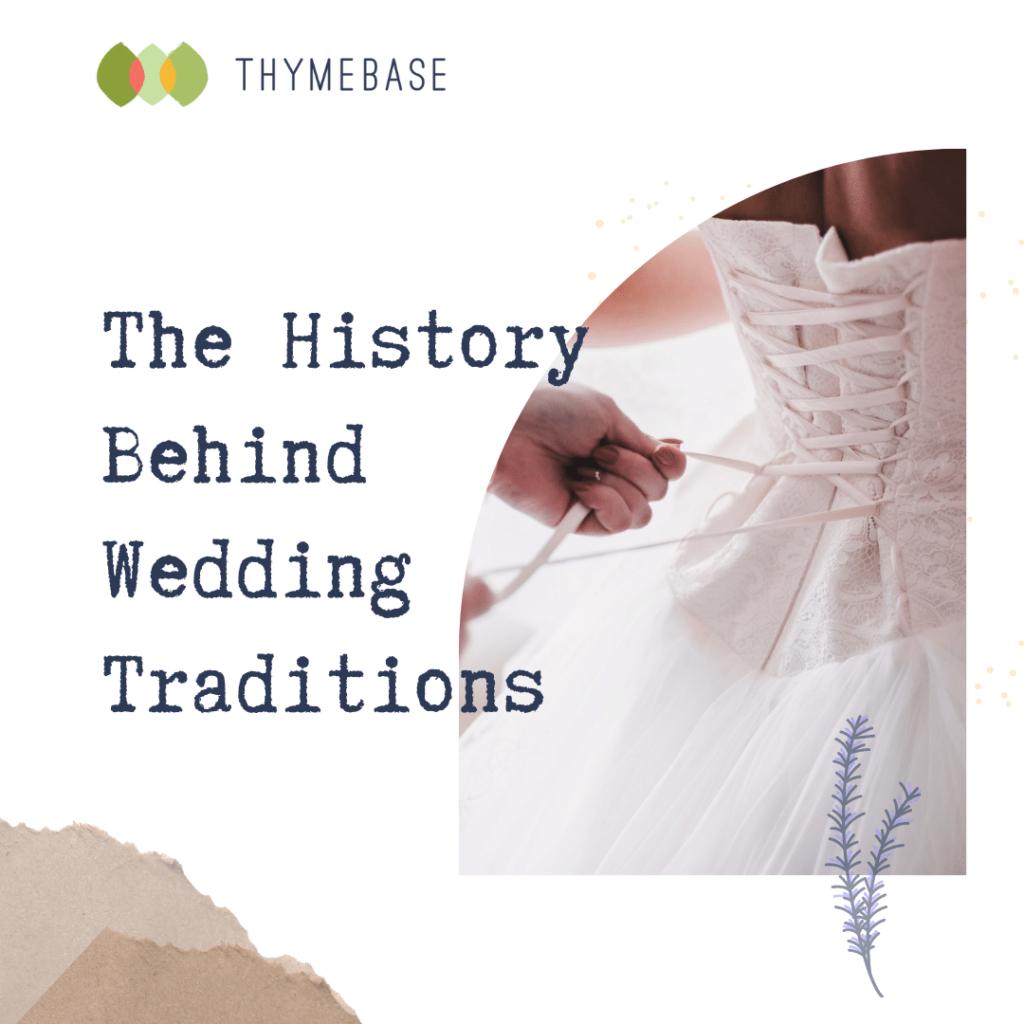When it comes to weddings, we all know the basic structure. The bride walks down the aisle carrying flowers; there is an exchange of vows, it ends with “I do.” Then, a party. There are other traditions, like “something old, something new, something borrowed, and something blue” and the bouquet toss.
Where did the exchange of wedding rings come from, and why does the bride wear a white dress? These are all traditions and moments we all expect to see on a wedding day, but where exactly did they start? Their origins and histories remain genuinely fascinating.
The History Of The Wedding Veil
The wearing of a white dress and a wedding veil have two different origins. And surprisingly, the veil tradition has outlasted the white dress by millennia. The exact origin of this tradition is unknown as it has gained and lost popularity in multiple countries through the centuries. Still, a common origin story is that veil wearing started in Ancient Roman times when brides wore a “flammeum,” a large red veil (flame-colored). It was believed to confuse demons on the wedding day and protect the couple from potential curses.

This tradition has been adopted by many cultures after this point in history. The symbolic meaning of the veil has evolved over time to be unique to cultures and differ amongst religions as well. But that is a story for another day.
The History Of The White Wedding Dress
As the veil is the outer layer, next the origin of the white dress will be addressed. In 1840 Queen Victoria married Prince Albert in a white wedding dress, and that was that. The fashion statement at the time sparked a domino effect in which the wealthier brides all wore white dresses, while the lower-class brides maintained the earlier tradition of just wearing their best dress.

Due to the coverage of the queen’s wedding, it was the talk of the town for quite some time. After the buzz died down, it became a point of status to wear a white dress. And by the 20th century, it had become a tradition. It took a mere 60-70 years for the white dress to become a westernized tradition and only because Queen Victoria wanted to show off some British lace.
The History Of Wedding Bouquets
Wedding bouquets are a beautiful addition to any wedding ceremony, and they’ve also been around for quite some time. This tradition once again stemmed from Ancient Rome and symbolized fertility, new beginnings, and fidelity. In the Middle Ages, the bouquet included dill and garlic to ward off evil spirits that might harm the bridal couple. By the Victorian era, exchanging flowers became a way for members of society to express their love and other meanings. This exchange obviously gained a romantic connotation and then became closely associated with the wedding ceremony.
Related: Floriography And The Meaning Behind Wedding Flowers

The History Of The Bouquet Toss
The bouquet toss has a different origin. Back when the tradition started in medieval Europe, it was to distract unmarried women guests. They had a habit of ripping little pieces from the bride’s gown to ensure good fortune. Soon the catching of the bouquet symbolized luck and fertility. This tradition and its symbolism have changed over the centuries. These days, when a single woman catches the bouquet, it means that she is next in line for the big day.
The History Of Wedding Vows
The wedding vows, followed by that long-awaited I do, started in 1549 when Thomas Cranmer wrote them in his “Book of Common Prayer.” The small irony hidden in these sentences is that they were “stolen” from medieval Catholic rites in Latin and rewritten by the “architect of English Protestantism.”
The History Of Exchanging Rings
After the vows and before the declaration of being officially married by the officiant, the rings need to be exchanged. The wearing of rings on the fourth finger began in the time of the ancient Egyptians. Although their rings were not made of gold and silver as they are today, the tradition of the fourth finger on the left hand started there. The Egyptians believed that this finger had a vein that ran directly to the heart – a vein of love.

The History of Something Old, Something New
“Something old, something new, something borrowed, something blue, a sixpence in your shoe” is an Old English Rhyme and can be dated back to the 19th century. This is also the inspiration for the tradition where a bride wears something from each of these categories. The meaning behind this rhyme is all tied up in symbolism.
Something old is to tie you to the past; something new is to help you as you go into the future. Something borrowed brings you luck from a married friend or relative, and the color blue has been seen as a ward against the evil eye for many years. The sixpence is no longer used today due to it not being produced anymore. Still, back at the start of this tradition, it was meant to bring prosperity to the new couple.
The History Behind Modern Weddings
When looking at a modern wedding, it is truly remarkable to realize that all the little traditions taken for granted and expected are steeped in such a rich history. Weaving together many events and cultures to form the typical day that we have now is no mean feat, and the evolution of the wedding is a fascinating topic.
Planning a wedding is a complex task, made easier with event planning software. Try our wedding timeline maker.

